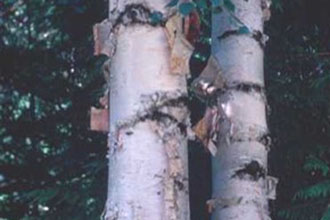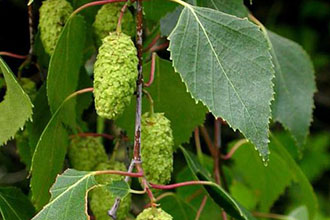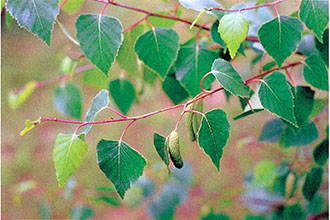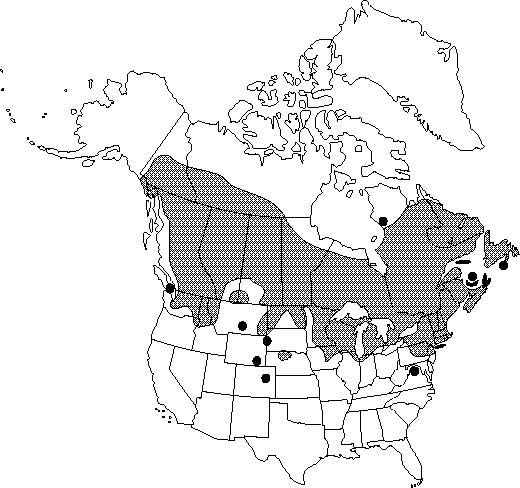USFS Plant Database
Paper birch is a short-lived, shade-intolerant, pioneer species. It rapidly colonizes open disturbed sites created by wildfire, windthrow, or avalanche but lasts only one generation before it is replaced by shade-tolerant conifers or northern hardwoods. Paper birch seeds-i aggressively after wildfire, often forming large, essentially pure stands. (Plant Database)
A decoction has been used to treat dysentery, various diseases of the blood, induce sweating, and to ensure an adequate supply of milk in nursing mothers. Birch gum could have been medicinal for some stone-age gathers. The chewable gum contains zylitol, a disinfectant, and some terpenes, which could give the chewier a mild buzz. (Plant Guide)
The currently accepted scientific name of paper birch is Betula papyrifera Marsh. It is wide ranging and exhibits considerable ecotypic variation.
In boreal spruce ecosystems, paper birch forms nearly pure, pioneer communities on disturbed sites. It is rare in late successional or climax forests and generally restricted to openings. It is a principal component of boreal mixedwoods in Canada because its pioneering habit is favored by the relatively frequent 50- to 125-year fire return interval. Codominants in mixedwoods include trembling aspen (Populus tremuloides), black spruce (Picea mariana), white spruce (P. glauca), jack pine (Pinus banksiana), and balsam fir (Abies balsamifera). In the Northern Great Plains, paper birch forms climax woodland communities on moist, north- or east-facing slopes. (Plant Database)



